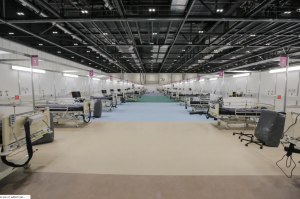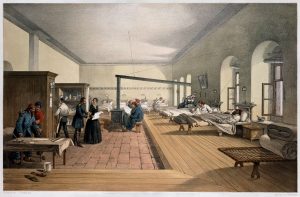A name to sing about (Journal of Visual Culture & HaFI, 20)
This is the twentieth instalment of a collaborative effort by the Journal of Visual Culture and the Harun Farocki Institut, initiated by the COVID-19 crisis. The call sent to JVC’s editorial board, and a wide selection of previous contributors and members of its extended communities, described the task as follows: „There is a lot of spontaneous, ad hoc opinion-making and premature commentary around, as to be expected. However, the ethics and politics of artistic and theoretical practice to be pursued in this situation should oblige us to stay cautious and to intervene with care in the discussion. As one of JVC’s editors, Brooke Belisle, explains: ‚We are not looking for sensationalism, but rather, moments of reflection that: make connections between what’s happening now and the larger intellectual contexts that our readership shares; offer small ways to be reflective and to draw on tools we have and things we know instead of just feeling numb and overwhelmed; help serve as intellectual community for one another while we are isolated; support the work of being thoughtful and trying to find/make meaning…which is always a collective endeavour, even if we are forced to be apart.'“ TH

Nightingale Hospital, Excel Center, London, April 2020 (photo Matt Writtle, Evening Standard)

Florence Nightingale in a ward of the hospital at Scutari, Albania (from an 1856 lithograph by William Simpson)
A name to sing about
On May 04 the media reported that NHS Nightingale hospitals around the UK are going to be shut, weeks after they were opened and only having admitted what sounds like an insignificantly small number of patients. The explanation offered—that there are enough beds in regular hospitals—has been confusing, to say the least. If the national health service is doing fine, why are we discouraged from going to our local surgeries or emergencies? If so, why were the hospitals built in the first place, especially on such a scale? Nightingale London alone had the capacity of up to 4000 beds and there were seven hospitals opening across the country over the last month. Why were the specific locales chosen and how? And I could go on.
Listening to the MayDay Radio Notes on May 10, titled Nightingale Chronicles 2 – Failure and dedicated to London Nightingale, it struck me that there is something intrinsically flawed with the very name of the hospitals. Supposedly celebrating care giving, by evoking Florence Nightingale (1820-1910), the note tells us how nurses were expected to train for the challenges expecting them on the floor within a day, which failed to acknowledge even the basic premise of the profession, let alone appropriately respond to the complexities of the ongoing health crisis. The inability to adequately staff them is speculated as one of the main reasons why the hospitals were eventually closed.
Learning this made me realise how there are two different contradictions entangled with the failure to activate the effort invested in the Nightingale hospitals. Applying a simple modus ponens renders their closure clearly illogical, as it is inferring that although the NHS is under the biggest pressure in decades because of Covid-19 it nevertheless does not need any help. But derailing the idea of care while proclaiming to monumentalise it, as their name does, is a performative one and not as easily spotted. As Martin Jay explains it:
„A performative contradiction does not arise when two antithetical propositions (A and not A) are simultaneously asserted as true, but rather when whatever is being claimed is at odds with the presuppositions or implications of the act of claiming it .“(„The Debate over Performative Contradiction: Habermas versus the Postructuralists,“ in Martin Jay, Force Fields: Between Intellectual History and Cultural Critique [New York: Routledge, 1993], 29)
In retrospect, calling the hospitals by the person epitomising modern nursing was not a simple misnomer but a poor attempt at dressing up a wolf bred by austerity in the clothes of a sheep versed in historical knowledge. There is nothing new about this gesture. Quite the opposite, we heard this song many times before.
For instance, in Catch Phrases – Catch Images (1986), Harun Farocki interviews Vilém Flusser for television following the publication of Towards a Philosophy of Photography (1983). Sitting in a café, the two men discuss the working of news reporting, by looking at a cover page of Bild from November 1985. Their analysis focuses on the relation between texts and images, and how they intertwine in the service of demagogy, but their conclusion still resonates with us today. It is under the assumption of shared values (in this instance motherly love), they agree, that the newspaper camouflages its double moral standards, or its endorsement for and spectacularising of violence, kitschifying, debasing and reducing human dignity along the way.
Jelena Stojković is an art historian and writer based in London. She is the author of Surrealism and Photography in 1930s Japan: The Impossible Avant-Garde (2020).
15.05.2020 — Rosa Mercedes / 02